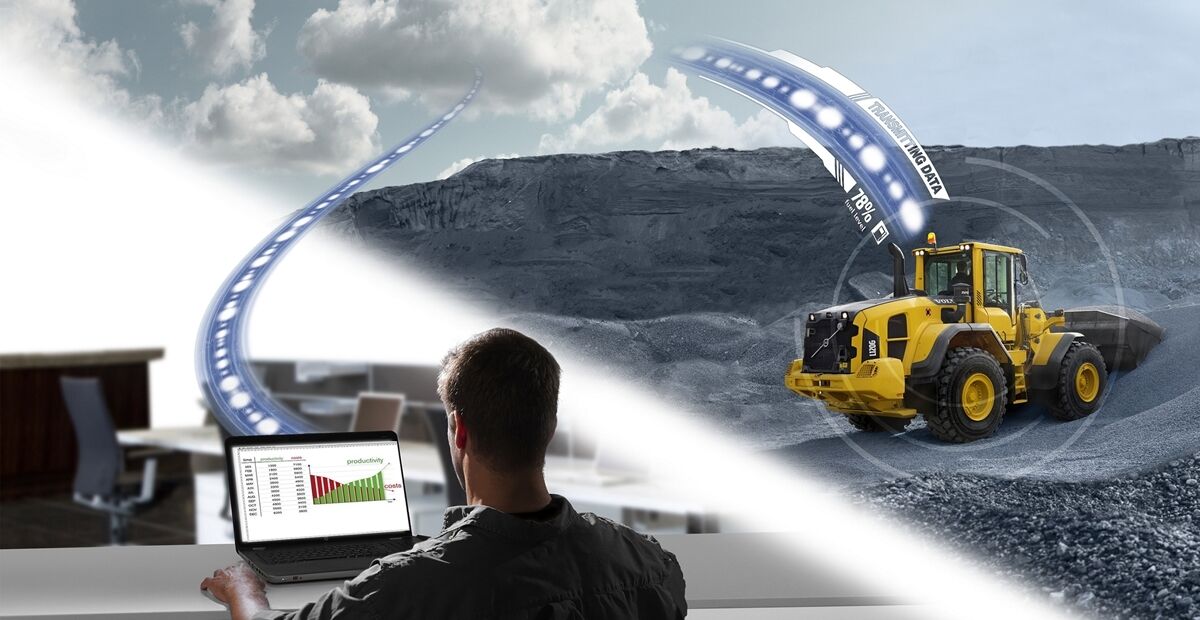Trusted platform, secured by
Top 5 Advantages of Telematics Technology in Equipment Rental

What Is Telematics?
Telematics simply refers to the transmission and receiving of data over telecommunications networks.
In recent years, these systems have evolved more specifically and practically, namely through the use of telecommunications technology. These allow equipment owners to monitor, log, and report data via cellular networks about heavy equipment, vehicles, construction machinery, and so on. Telematics data provides these benefits to equipment owners since it is consistent, provides trustworthy information, and the systems come with the capacity to make informed, accurate decisions to take decisive, proactive steps.

How beneficial is Telematics Technology?
We rent or buy equipment/machinery in the construction, logistic, warehousing industry, etc. However, there is no way for us to read any data generated from the equipment. The only way that we can understand the machine is via physical check and inspection. We do so when only something happens. It's too late.
Telematics technology allows the collection of data in real time and enables instant interpretation. It is beneficial to fleet management, remote diagnostics, preventive maintenance, GPS monitoring, and even safety are all possible with telematics technology. This enables owners and operators to better control equipment or vehicles, resulting in significant benefits and advantages such as greater production efficiency and a decrease in operating expenses.
Read also: The Advantages of Embracing Digital Transformation in Construction Equipment Rental
Top 5 Advantages of Telematics Technology
1. Performance of the Operator
Telematics data can be used to track poor habits like prolonged idling time and assist in increasing the productivity of a company's equipment operators. Rollovers and equipment tipping are both safety risks that can result from speeding, unpredictable movement, and overloading a machine. It allows the team to spot operators who are overusing or abusing equipment by tracking telemetry data. By changing this behavior, companies can save money on labor, delay equipment wears, and create safer work environments.
2. On-time schedule for maintenance and repairs
Arrangements can be carried out by preventative maintenance and repairs more effectively by integrating the telemetry data into maintenance management software. To avoid taking out equipment for preventive maintenance too soon or too late by accurately tracking engine and operating hours. Telematics systems can also be used as an alert method when equipment isn't performing at its best, which may be a sign that a part needs to be changed if it's failing. Early problem detection can increase the lifespan of the equipment and lower repair and labor expenses.
3. Asset Management
It provides a clear overview of how much each machine is used in active sites by just looking at telematics data. Utilization can be tracked accurately with the operating hours of each piece of equipment. It allows better deployment plans of equipment for every single project. Therefore, by knowing the exact position and amount of utilization of the equipment, this information may be used to ascertain whether there are underutilized assets, allowing owners to change the size or type of their fleet to meet their demand and usability.
4. Equipment or Project Cost Estimates
More precise task costs and estimates can be achieved by using telematics data. Telematics can notify information on machine hours and the fuel used to calculate operating expenses, which can be added to labor costs to produce more precise billing. This will provide more accurate predictions or more competitive bids of how much a certain task or job will cost in future projects by analyzing historical data from earlier initiatives.
5. Reduce Fuel Consumption
One of the main financial problems that telematics systems have been shown to tackle is lowering fuel use. Identifying which machines are being left on while no work is being done by tracking the amount of time spent idling compared to actual work on the equipment. Improving fuel efficiency can be attained by putting best practices into cutting down on idling times. Additionally, reducing idle times can save the cost of repair and maintenance while increasing engine life.
The future of the equipment rental industry.
We are going into the world of the Internet of Things. As a result, telematics technology will continue to be crucial, particularly as industries get closer to full digitalization and artificial intelligence. A strong telematics and fleet management plan will become a must for almost every business in the heavy equipment and construction industries as new capabilities are developed. It not only saves a ton of resources but also a lot of time and work. Keep abreast of telematics technology because businesses will undoubtedly use it in the future to develop solutions for their operations.
Need to rent Equipment? Check the rental rate instantly now!
Do you wish to rent equipment or a vehicle? Get the best rental rates by visiting Antbuildz.com today! Whether it's for a single day or a few months, every equipment rental made on Antbuildz.com is covered by Antbuildz Protection Plan, which provides up to S$15,000 in first-loss coverage. YES, IT IS ABSOLUTELY FREE!
Any Questions?
WhatsApp or Call Us for a FREE consultation on the most suitable equipment for your site. We’re more than happy to assist!
Related Articles

Drone Technology in the Construction Industry
Drones, or unmanned aerial vehicles (UAVs), are a rising trend among many indust ...
Learn more
10 May , 2025

9 Future Construction Technology That You Cannot Ignore
What is Construction Technology? Every day we are seeing how new technology is h ...
Learn more
10 May , 2025

Boom Lift Rental Rates in Malaysia: How Much Does It Cost?
Malaysia's booming industries and construction sites require frequent work at he ...
Learn more
10 May , 2025

What is Backhoe?
Construction projects require heavy machinery to get the job done. One of the mo ...
Learn more
10 May , 2025



.png)













